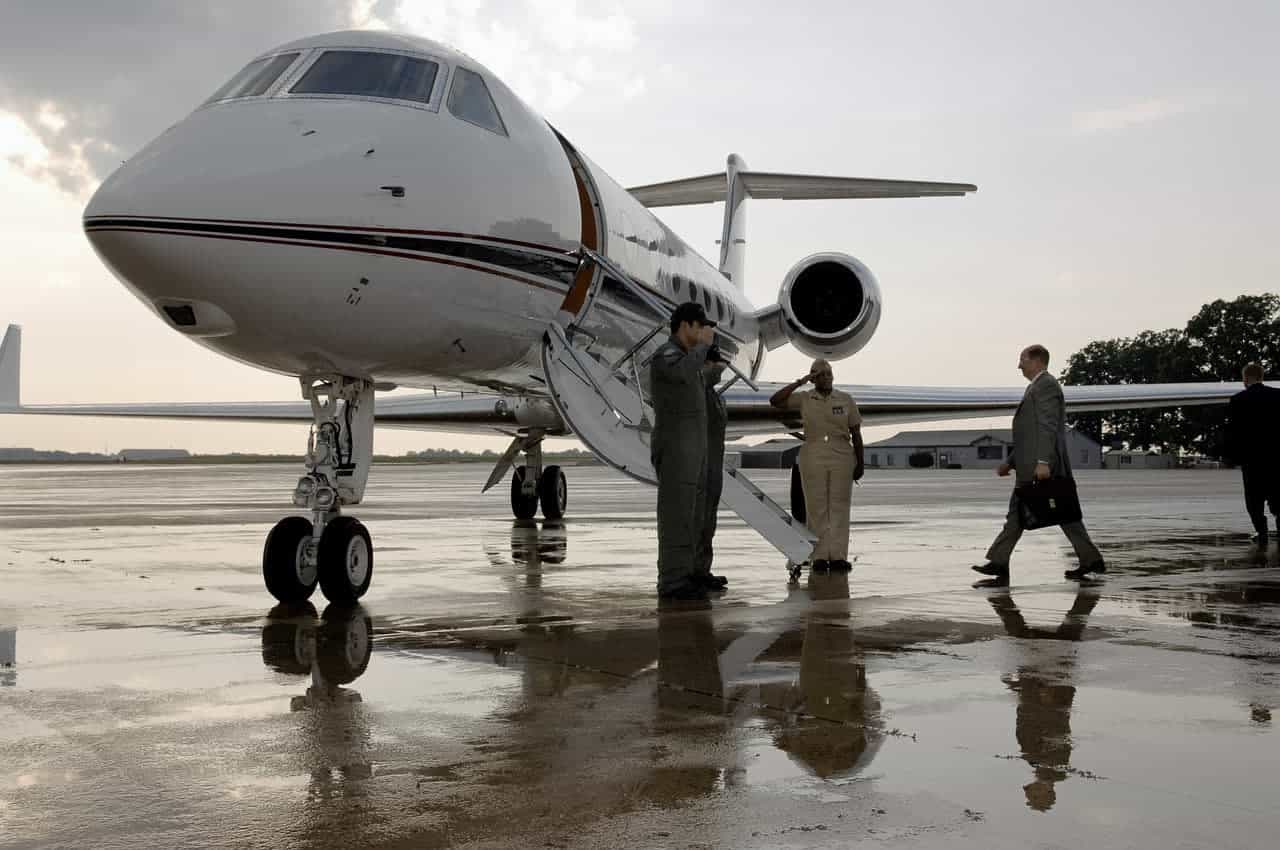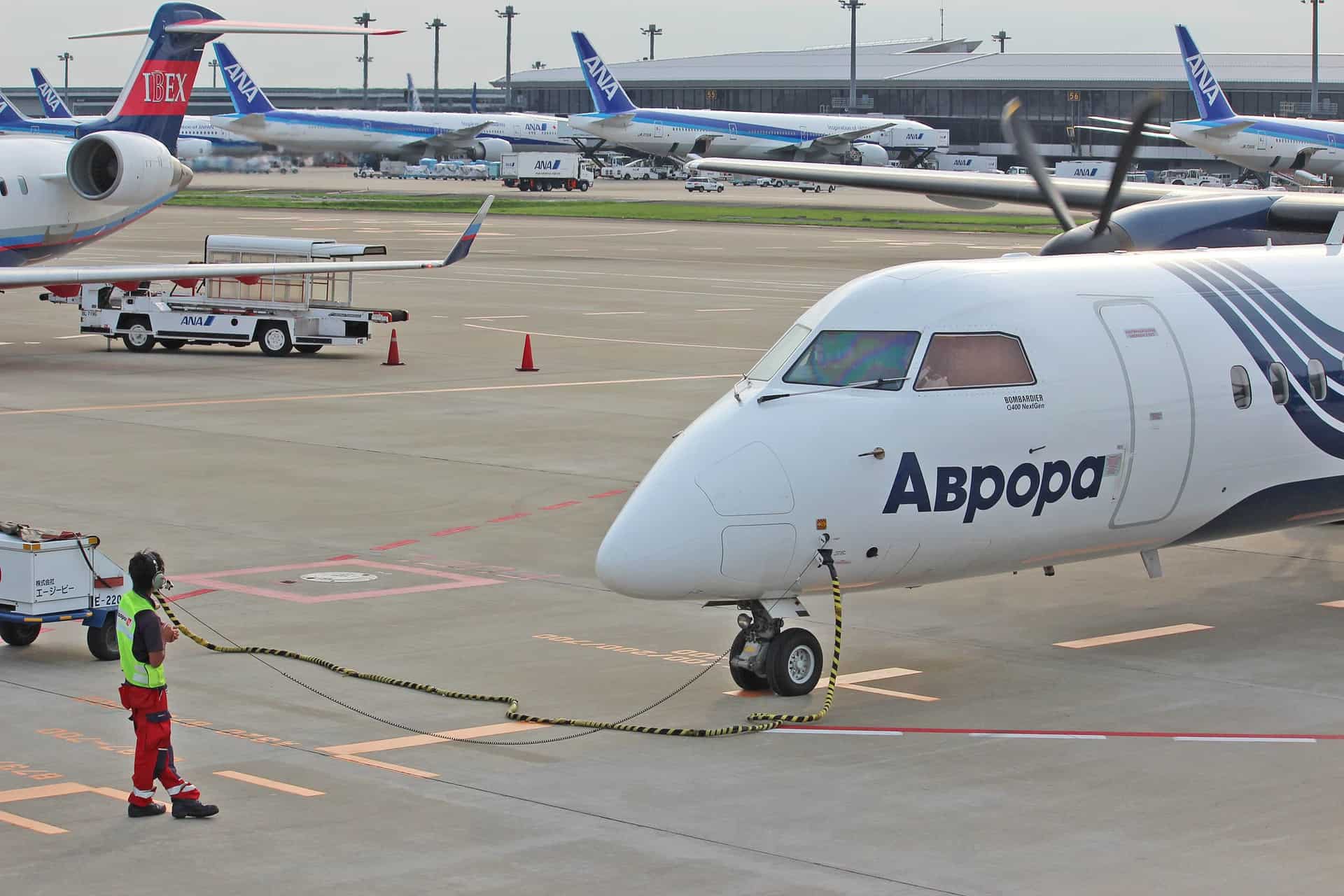Manufacturers dream about being the one to design the world’s largest, longest and heaviest airplane. Bigger is better, right? But where is the limit? And how big is too big? This is a list of 6 planes that turned out to be just that.
Over history aerospace companies have battled to create the giant of the skies, and today the attempt to build the largest aeroplane physically possible still continues.
As companies such as Virgin Galactic begin to explore the possibility of a commercial space industry, we are once again living in an age where records are being broken. But with the Boeing 747 now retired and the Airbus A380 discontinued, many people are wondering if the time of the giants is over.
Let’s take a walk through history and look at 6 examples of aircraft that were seemingly great innovations, but turned out to be too big.
Table of Contents
1. HK-1 Spruce goose / H-4 Hercules
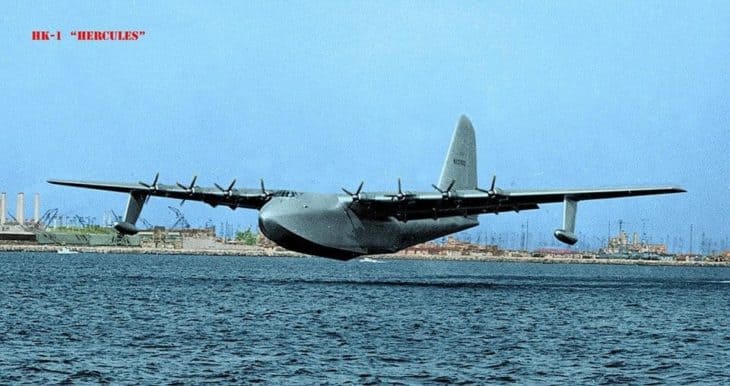
Despite being built 73 years ago, this 8-engine behemoth held the record for largest plane ever built until 2019 and still has the second largest wingspan of any plane. It was designed by eccentric millionaire Howard Hughes for the US military in WW2.
Although renowned for his irregular personality, Hughes was an excellent engineer and regularly designed elegant solutions for complex problems. Not afraid of a challenge, he was excited at the prospect of creating a plane deemed impossible by aviation rival McDonnell Douglas.
Unfortunately the Spruce Goose suffered delay after delay due to Hughes’ obsessive perfectionism and was not completed by the end of the war. But with his reputation so wrapped up in the plane, Hughes was determined to see the project through to completion.
In 1947 it made its first and only flight, lasting less than a minute. Sadly, no one chose to pursue the H-4 any further, suspecting its wooden frame would be too heavy to sustain prolonged flight, so the world never got to witness its full potential.
2. The Airbus A380

The world’s largest commercial passenger jet, the A380 is certified to transport over 850 passengers and has an endurance of 16 hours. Airbus received over 251 orders for the jet after it was introduced in 2007, but by 2019 they were almost giving them away.
If there was a market for a plane of that size, it was not big enough to share. Surely enough, after 12 years of manufacturing the A380, Airbus found this out the hard way. When Emirates cancelled an order of 39 super jumbos (in favor of 70 smaller jets) the remainder of the orders for the plane began to evaporate, forcing Airbus to sell the A380 for a price that did not even cover production costs.
At the time of design, the aviation industry was predicted to grow at an astronomical rate. For example, in the 10 years following 2007 the UK’s air travel increased by 65%. So with this in mind, a jet able to transport the same amount of passengers as a cruise ship was an exciting development.
Rival companies designed competitors for this huge passenger jet, but never followed through with their designs.
3. Boeing Pelican

One such design was the Boeing Pelican. In 2004 designs were shown for an ekranoplan with a wingspan of over an acre and capable of carrying 3000 people (more passengers than The Titanic!). An ekranoplan is a cross between a ship and a plane, also known as a ground-effect vehicle, which takes advantage of the reduced drag whilst an airplane flies close to the ground or water.
Double the size of the Antonov An-225 and able to transport 5x the cargo, the pelican was pitched as a more efficient alternative to cargo ships, able to mobilize an army in days. However, the project was mysteriously dropped without explanation in 2006.
The general consensus is that the plane was too expensive, too ugly and too impractical for the US army to continue with.
4. The Caspian Sea Monster / KM Lun
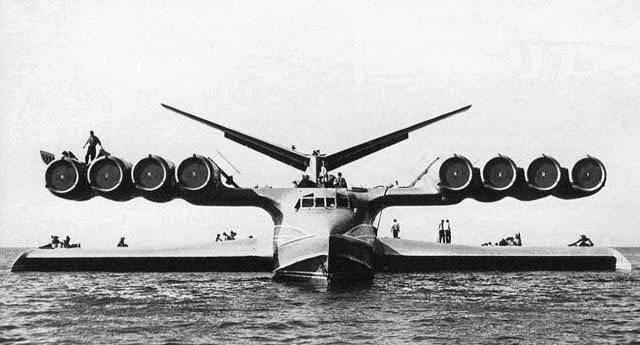
Although the Pelican never made it into the air, the Soviet Union’s KM Lun did. Known as the Caspian Sea Monster, its name is now more appropriate than ever after it sank in 1980, following a crash caused by pilot error.
Too big to be moved, it was left to decay in the waves until August 2020 when it was dragged to shore. The KM is still the longest plane ever built, stretching to 92m.
Before its watery end, the KM was tested and modified for over 10 years. Flying so close to the water, it was particularly attractive to the Russians because it could fly below minimum radar altitude. This would allow it to ‘conduct lightning sea-borne attacks’ with its six anti-ship missiles.
Like many others on this list, this leviathan was never used operationally and no attempt was made to recover or remake it after the crash. But ekranoplan technology has seen a resurgence recently with developers in Singapore, China and the US taking a renewed interest in the project. So whilst we might not see one even close to the size of the Caspian Sea Monster, we might see a smaller version of it.
5. Antonov An-225 Mriya

‘No other name carries more weight’; that is the Antonov slogan, and with the illustrious An-225 among their fleet, there is no denying it. Taller than a 5-story building and weighing a whopping 640 tons, this plane weighs roughly the same as 100 elephants.
This Ukranian mammoth was the first aircraft in the world to be fitted with 6 jet engines and is the largest aircraft by weight, length and wingspan, making it the biggest thing flying today. Designed to carry a space shuttle, the Mriya found a new lease of life after the collapse of the Soviet space program.
Constructed in 1988, four Mriyas were planned to be built, but only one was ever completed and today, a second pile of parts is gathering dust in a warehouse in Ukraine. It has been 70% completed since 1994, but in 2016 China expressed a renewed interest in its completion, giving fans around the world a glimpse of hope that we might see this hulk a bit more frequently.
Unfortunately this glimmer has since been extinguished. Among other factors, the Antonov CEO has claimed that the required technological updates and building costs would make completion unviable. Whilst 2020 has seen the decimation of commercial passenger aviation, the cargo world is still alive and kicking and Mriya has been busy taking on humanitarian missions to transport COVID-19 medical supplies.
But contracting the Mriya costs a minimum of $1 million and with only 20 flights a year with a limited clientele, (only 35% of the world’s airports can facilitate it) any hope of recouping costs would be idiotic. So what exactly is the future for this plane? Antonov believes it is in space and have discussed converting the plane into an in-air launch platform for space shuttles.
6. The Stratolaunch
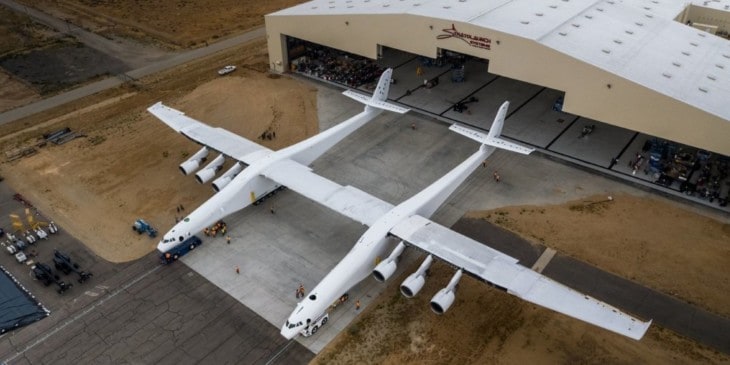
Antonov might be considering this change a little too late though, as companies such as Virgin Galactic and Stratolaunch are lightyears ahead in this field. Stratolaunch is refining a plane to launch hypersonic rockets and other space tech in-air.
Currently holding the record for the largest wingspan, the Stratolaunch Carrier Aircraft’s first launch took place in April 2019 and is currently working to get certified by the FAA. Created by the late Paul Allen (co-founder of Microsoft), the new owners are hoping to operate 6-10 missions a year.
Elegantly designed, it has 6 engines and is built with many old B747-400 parts. With two fuselages, only the right one (from inside the plane) is manned and the other is left unpressurised.
Although made up of old parts, Stratolaunch is living in 2080 and anticipating the need for reliable and routine transport into space with the aid of this plane. Based out of the world’s only licensed spaceport, this massive bird needs an enormous 3600m runway to take off.
Even though the new owners have shifted the original focus of the company to offer high-speed test flights, the Stratolaunch is the only sky giant of this list that has a tangible future ahead of it.
References ▾
- https://thepointsguy.co.uk/news/too-big-to-succeed-why-the-airbus-a380-is-dead/
- https://modernairliners.com/airbus-a380/airbus-a380-specs/
- https://time.com/5529439/airbus-a380-retired/
- https://simpleflying.com/spruce-goose/
- https://www.historytoday.com/archive/maiden-flight-spruce-goose
- https://www.boeing.com/news/frontiers/archive/2002/september/i_pw.html
- https://www.hotcars.com/the-truth-behind-the-boeing-pelican-discontinuation-by-the-us-army/
- https://www.bbc.com/future/article/20170503-the-worlds-biggest-plane-may-have-a-new-mission
- https://simpleflying.com/second-an-225-economically-unviable/
- https://edition.cnn.com/travel/article/antonov-an-225-kiev-ukraine/index.html
- https://edition.cnn.com/travel/article/worlds-largest-airplanes/index.html
- https://www.cnet.com/pictures/meet-the-stratolaunch-the-worlds-largest-airplane/40/
- https://spacenews.com/stratolaunch-to-resume-test-flights-in-september/
- https://edition.cnn.com/travel/article/caspian-sea-monster-ekranoplan/index.html
- https://nationalinterest.org/blog/buzz/largest-aircraft-ever-built-meet-h-4-hercules-or-spruce-goose-50177
Related Posts











